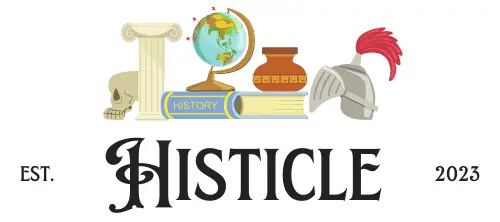
In this post, we’re looking at 10 fascinating facts about Marie Curie that will leave you in awe of her scientific prowess and determination.
From her groundbreaking discoveries to her personal struggles and triumphs, Curie’s life is a testament to the power of perseverance and the pursuit of knowledge.
In this blog post, we’ll take a closer look at the incredible story of this legendary scientist, exploring the moments that shaped her career and the lasting impact of her work.
Whether you’re a science enthusiast or simply curious about one of history’s most brilliant minds, these facts about Marie Curie will give you a newfound appreciation for her extraordinary contributions to the world of science.
So, let’s dive in and uncover the remarkable tale of Marie Curie!
The Details: 10 Intriguing Facts About Marie Curie
Kicking off our list of 10 fascinating facts about Marie Curie, let’s dive into her unique dual citizenship.
Born in Warsaw, Poland, Curie later moved to Paris and became a naturalized French citizen, while still maintaining her Polish identity throughout her life.
1. Dual Citizenship
When diving into the fascinating facts about Marie Curie, it’s essential to start with her background.
Born Maria Salomea Skłodowska in 1867 in Warsaw, Poland, she grew up under Russian occupation.
Despite the challenges, young Maria excelled in her studies at a secret underground university.
Later, she followed her sister to Paris, where she adopted the French version of her name, Marie.
There, she met and married physicist Pierre Curie, becoming a naturalized French citizen.
However, Marie never forgot her Polish roots, maintaining dual French-Polish citizenship throughout her life.

2. Sorbonne Pioneer
Another remarkable entry in the list of facts about Marie Curie is her groundbreaking role at the Sorbonne.
In 1906, after the tragic death of her husband and research partner, Pierre Curie, Marie was appointed to fill his position.
This milestone made her the first female professor at the prestigious Parisian university.
As a trailblazer in a male-dominated field, Curie faced numerous challenges, but her brilliance and dedication prevailed.
Her lectures and research at the Sorbonne solidified her reputation as a leading scientist, paving the way for future generations of women in academia.

3. Nobel Rarity
Among the most impressive facts about Marie Curie is her unparalleled achievement in the Nobel Prize arena.
In 1903, she shared the Nobel Prize in Physics with her husband Pierre and physicist Henri Becquerel for their research on radioactivity.
Just eight years later, in 1911, Curie was awarded the Nobel Prize in Chemistry for her discovery of the elements radium and polonium.
This extraordinary accomplishment made her the first person to win Nobel Prizes in two different scientific fields.
Her dual Nobel victories not only highlighted her exceptional scientific contributions but also cemented her status as a pioneering figure in the history of science.

4. Wartime Radiology
Marie Curie’s compassion and scientific expertise converged during World War I, leading to another fascinating addition to the facts about Marie Curie.
Recognizing the need for medical assistance on the battlefield, Curie developed mobile X-ray units, which she called “petites Curies” (little Curies).
These units, equipped with X-ray machines and photographic darkrooms, allowed for quick and accurate diagnosis of wounded soldiers’ injuries.
Curie personally trained numerous women to operate these units and even drove one herself to the front lines.
Her innovative approach to wartime medical care saved countless lives and demonstrated her commitment to applying scientific knowledge for the greater good.
5. Rejected Membership
Despite her groundbreaking scientific achievements, Marie Curie faced significant gender discrimination, which leads us to another surprising entry in the facts about Marie Curie.
In 1911, the same year she won her second Nobel Prize, Curie was nominated for membership in the French Academy of Sciences.
However, the academy denied her admission, primarily because she was a woman.
The vote was overwhelmingly against her, with 90 votes opposing her membership and only 30 in favor.
This decision highlighted the deep-rooted bias against women in the scientific community during that era, and it would take almost a century for the French Academy of Sciences to elect its first female member in 1979.

6. Element Naming
Marie Curie’s love for her homeland shines through in another intriguing item on the list of facts about Marie Curie.
In 1898, while investigating the radioactive properties of pitchblende, Curie discovered a new element.
She chose to name this element “Polonium” in honor of her native country, Poland.
At the time, Poland was not an independent nation, having been partitioned by neighboring empires.
By naming the element Polonium, Curie sought to bring attention to Poland’s plight and celebrate her cultural heritage.
This naming decision not only highlighted her scientific prowess but also showcased her deep connection to her roots and her desire to promote Polish identity on a global stage.
7. Curie Temperature
While many facts about Marie Curie focus on her individual achievements, it’s essential to recognize the scientific contributions of her husband, Pierre Curie.
One such contribution is the Curie temperature, a critical concept in magnetism named after Pierre.
The Curie temperature is the point at which a material’s intrinsic magnetic moments become randomized, losing their ferromagnetic properties.
Pierre’s work on magnetism and the discovery of this temperature laid the groundwork for future advancements in the field.
Although Marie Curie is often in the spotlight, her collaboration with Pierre was crucial to their groundbreaking research on radioactivity, highlighting the importance of scientific partnerships.

8. Donated Winnings
Marie Curie’s generosity and dedication to scientific progress shine through in another compelling entry on the list of facts about Marie Curie.
When she received her Nobel Prizes, Curie chose to donate the prize money to fund further scientific research.
This selfless act demonstrated her unwavering commitment to the advancement of science and her belief in the importance of supporting future discoveries.
By donating her prize money, Curie not only helped to finance important research projects but also set an example for other scientists to prioritize the greater good of the scientific community over personal gain.
Her actions continue to inspire generations of researchers who strive to make a positive impact on the world through their work.
9. Humble Beginnings
Marie Curie’s rise to scientific prominence is even more impressive considering her humble beginnings, a fact that adds depth to the list of facts about Marie Curie.
Born in Warsaw, Poland, under Russian occupation, Curie faced numerous obstacles in her pursuit of education.
At the time, Polish universities did not admit women, so Curie had to seek alternative paths.
She began her scientific journey by attending the Flying University, a secret underground educational institution in Warsaw that provided classes to Polish youth.
Despite the challenges and risks associated with this unconventional education, Curie excelled in her studies, laying the foundation for her future groundbreaking research and showcasing her determination to succeed against all odds.
10. Posthumous Honor
The final entry on our list of facts about Marie Curie highlights the enduring legacy of her contributions to science.
In 1944, over a decade after Curie’s death, scientists at the University of California, Berkeley, discovered a new radioactive element.
They chose to name this element “Curium” (Cm) in honor of Marie Curie and her husband Pierre, acknowledging the couple’s groundbreaking work in the field of radioactivity.
The naming of Curium serves as a testament to the lasting impact of Curie’s research and her status as a scientific icon.
It is a fitting tribute to a woman who dedicated her life to unraveling the mysteries of the atomic world and whose discoveries continue to shape our understanding of science today.
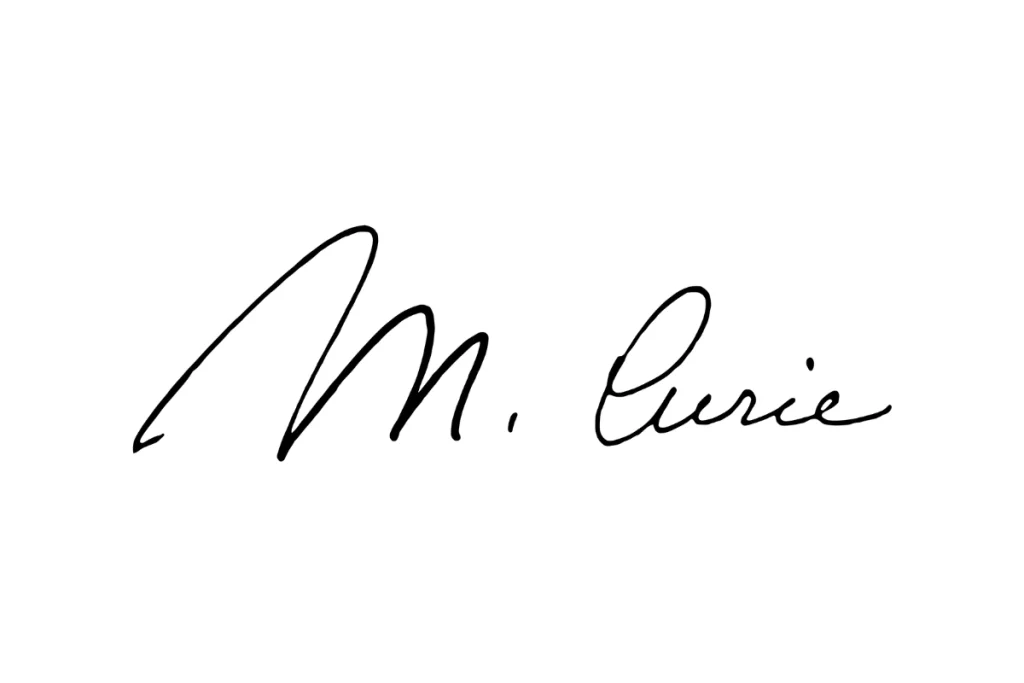
Short Bio: Facts About Marie Curie
Full Name:
Marie Salomea Skłodowska Curie
Date of Birth:
November 7, 1867
Place of Birth:
Warsaw, Congress Poland, Russian Empire
Date of Death:
July 4, 1934
Profession:
Physicist and Chemist
Major Achievements:
- Pioneered research on radioactivity
- Discovered the elements Polonium and Radium
- Developed techniques for isolating radioactive isotopes
- Won the Nobel Prize in Physics (1903) and Chemistry (1911)
- First woman to win a Nobel Prize and the first person to win the Nobel Prize in two different scientific fields
- Developed mobile X-ray units during World War I to assist battlefield surgeons
Legacy:
- Helped to establish the field of atomic physics and the study of radioactivity
- Paved the way for future generations of women in science
- Inspired the creation of the Marie Curie Fellowship, a European Union research grant supporting researchers at all career stages
- Numerous institutions, including the Marie Curie Institute in Paris and the Marie Curie Cancer Care charity in the United Kingdom, bear her name in honor of her scientific contributions
- Her work laid the foundation for advancements in nuclear physics, radiotherapy, and medical imaging techniques
- Recognized as one of the most influential scientists of the 20th century, her legacy continues to inspire scientists and non-scientists alike
Wrap-up: Facts About Marie Curie
As we’ve explored these 10 fascinating facts about Marie Curie, it’s clear that her life and work have left an indelible mark on the world of science.
From her groundbreaking discoveries in radioactivity to her unwavering dedication to research and education, Curie’s legacy continues to inspire and inform scientists and non-scientists alike.
Her story is one of perseverance, brilliance, and an unrelenting passion for knowledge, reminding us that even in the face of adversity, one person’s determination can change the course of history.
As we reflect on these remarkable facts about Marie Curie, let us celebrate her contributions and strive to emulate her spirit of curiosity, innovation, and service to humanity.
May her example continue to light the way for generations of scientists to come.
Thanks for reading!
For more content on famous scientist throughout history, check out the articles listed below:
FAQs: Facts About Marie Curie
Marie Curie’s family life was marked by both joy and tragedy. In 1895, she married Pierre Curie, a fellow scientist who shared her passion for research.
Together, they had two daughters: Irène, born in 1897, and Ève, born in 1904.
The Curies fostered a love for learning within their household, and Irène would later follow in her parents’ footsteps, becoming a renowned scientist in her own right.
However, tragedy struck the family in 1906 when Pierre died in a street accident, leaving Marie to raise their daughters alone while continuing her groundbreaking research.
Despite this immense loss, Marie remained dedicated to her children and her work, striving to create a nurturing environment that encouraged intellectual curiosity.
She maintained close relationships with her daughters throughout her life, and in later years, she even collaborated with Irène on research projects, forming a unique mother-daughter scientific partnership.
Marie Curie’s groundbreaking work with radioactive materials came at a significant cost to her health.
Throughout her career, she was exposed to high levels of ionizing radiation without the benefit of modern safety precautions.
Curie and her colleagues regularly handled radioactive substances with their bare hands, and she even carried test tubes containing radioactive isotopes in her pockets.
Over time, this prolonged exposure took a toll on her body. Curie began experiencing symptoms of radiation sickness, including fatigue, anemia, and painful burns on her hands.
Ultimately, it was this very radiation that led to her death in 1934 at the age of 66.
She succumbed to aplastic anemia; a rare blood disorder that is now known to be linked to radiation exposure.
Marie Curie’s tragic fate serves as a sobering reminder of the dangers associated with pioneering scientific research and the importance of proper safety measures when working with hazardous materials.
Marie Curie’s legacy extended beyond her own groundbreaking discoveries; she also mentored and inspired a new generation of scientists who would go on to make significant contributions in their own right.
One of her most notable students was Marguerite Perey, a French physicist who worked as a laboratory assistant for Curie.
Under Curie’s guidance, Perey discovered the element Francium in 1939, making her the first woman to discover a chemical element.
Another famous pupil was Lise Meitner, an Austrian-Swedish physicist who studied under Curie at the Sorbonne.
Meitner later played a crucial role in the discovery of nuclear fission, although she was overlooked for the Nobel Prize in favor of her male colleague, Otto Hahn.
Curie also influenced her own daughter, Irène Joliot-Curie, who followed in her mother’s footsteps and became a renowned scientist, winning the Nobel Prize in Chemistry in 1935 for her work on artificial radioactivity.
These exceptional women, among others, carried on Marie Curie’s legacy of scientific excellence and helped to pave the way for future generations of female scientists.
References: Facts About Marie Curie
Des Jardins, Julie. “Madame Curie’s Passion.” Smithsonian, Smithsonian.com, 1 Oct. 2011, www.smithsonianmag.com/history/madame-curies-passion-74183598/.
History.com Staff. “Marie Curie: Facts about the Pioneering Chemist.” HISTORY, 2 Oct. 2018, www.history.com/news/marie-curie-facts.
“Marie Curie.” Science History Institute, www.sciencehistory.org/education/scientific-biographies/marie-sklodowska-curie/.
The Editors of Encyclopedia Britannica. “Marie Curie | Biography & Facts.” Encyclopedia Britannica, 3 Nov. 2018, www.britannica.com/biography/Marie-Curie.
The Nobel Prize. “The Nobel Prize in Physics 1903.” NobelPrize.org, The Nobel Prize, 2024, www.nobelprize.org/prizes/physics/1903/marie-curie/biographical/.
